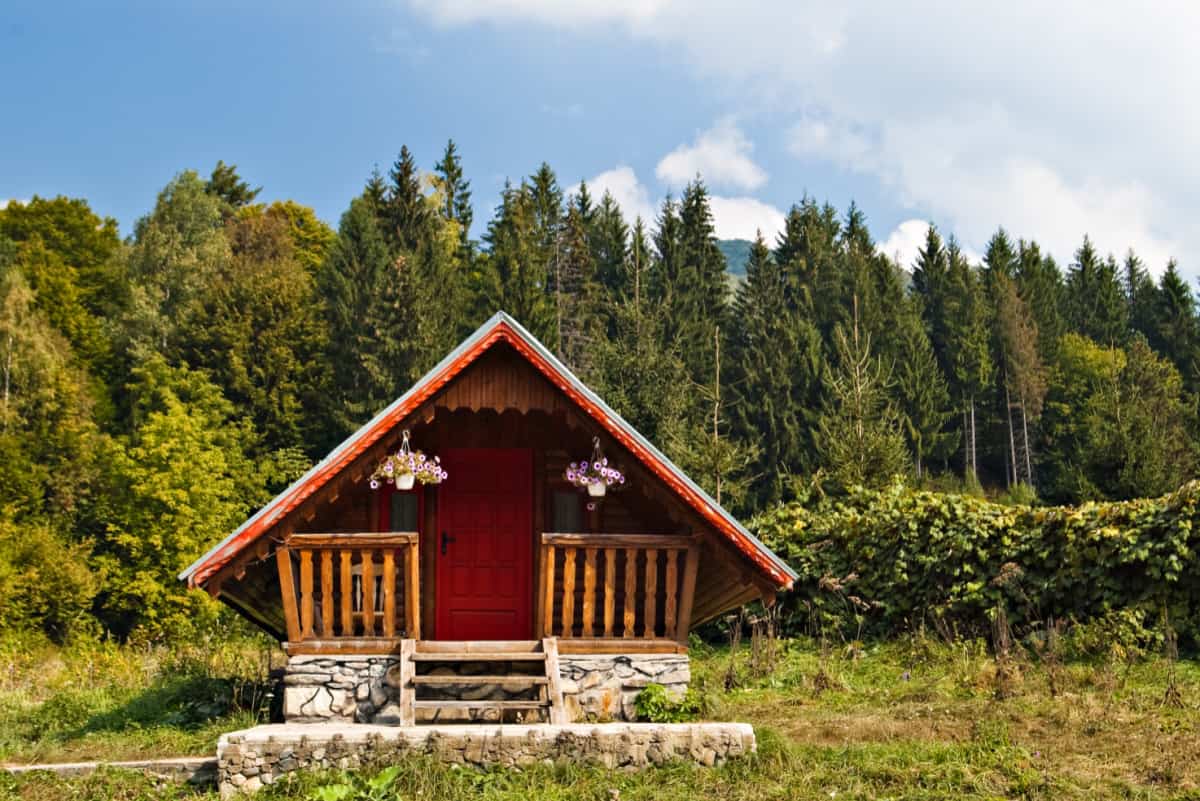The tiny house movement has been growing steadily since the late 1970s, but the size of the houses has not. While tiny homes come in a wide variety of configurations and designs, they are bound by height and width requirements. Why are these restrictions in place?
Tiny homes have width and height restrictions to comply with local building codes and zoning laws. Tiny homes on wheels also have to comply with RV regulations and towing capabilities. The upper limits of a tiny home are less defined, but homes over 1000 sq ft aren’t usually legally considered tiny.
This article will review the following:
- Size requirements for tiny homes vary from state to state and country to country.
- Regulations tend to be more complicated for houses on foundations than houses on wheels.
- Areas with much looser building regulations and zoning laws contain houses in those areas with fewer size restrictions.
Local Regulations and Size Requirements
The definition of “tiny” is different depending on who you ask, but the upper limits of what is legally considered a tiny house are more clearly defined. The International Code Council publishes the International Residential Code (or IRC) to provide guidelines for building safe homes.
The goal of the IRC is to bring together regulations of all the aspects of construction into a single place while promoting public safety, health, and welfare and encourage energy-efficient practices. Most local building codes are modeled after the IRC.
The problem tiny homes run into with this code is the minimum size requirements for new construction. Ceiling heights and square footage requirements for individual rooms (such as kitchens or bedrooms) are generally larger than is possible in a tiny house. To meet IRC standards, a new build requires about 1000 square feet (92.9 square meters).
Because tiny homes are usually closer to 400 or 500 square feet (37.16 or 46.45 square meters), they don’t meet the building codes or zoning requirements for most areas. Tiny homes on wheels are subject to further regulations to make them road-safe.
Building Codes
The first limitation you’ll run into when building tiny homes is the building code for your area. Building codes dictate how structures can be built, including their size and shape, and are different depending on the type of structure you’re building.
Tiny houses are generally too small to meet the building codes for a residential or single-family home. However, square footage isn’t the only limitation, as there are some tiny homes that have roughly the same square footage as a small house.
Things like emergency egress, the distance between rooms, and ceiling heights can also impact whether a tiny home meets code or not. Building codes generally don’t take tiny homes into consideration, leaving them in a grey area.
Zoning Laws
Zoning laws interact closely with building codes, as they determine where to build different types of spaces. Municipal governments divide the community into different zones. The zone then determines what you can build where, which is meant to help communities function at their best, but which can have unintended consequences.
Residential zones require that buildings within them meet the building codes for single-family or multi-family homes (like apartment buildings) and sometimes both. However, tiny houses typically don’t fit either of those codes or have their own building codes.
Building a tiny home on wheels to the specifications of an RV is one solution to this problem. Typically this means you have to park your home at campgrounds, which have their own rules about how long you can stay. For folks who choose tiny so they can travel, this isn’t a big obstacle.
Some communities are loosening their restrictions or adopting new building codes and zoning laws to accommodate tiny homes and tiny house communities. As these types of laws become more mainstream, the definition of a tiny house will be more clearly defined legally.
Largest Tiny House on Wheels
Tiny houses on wheels currently have the strictest and most well-defined size restrictions because they are technically RVs. Building your tiny home on wheels is the most straightforward way to comply with building and zoning regulations because the requirements are clearly defined.
Each state in the U.S. has slightly different size limits on RVs, but the average maximum size is 13.5 ft (4.11 m) tall by 8.5 ft (2.59 m) wide by 40 ft (12.19 m) long. There are also length restrictions for how long your towing vehicle and tiny house can be, which is no more than 65 ft (19.81 m) combined. These restrictions are meant to keep the homes safe for travel on major roadways.
Some have slide-outs or pop-outs that can expand the square footage when it’s parked, but they have to meet the size restrictions while they’re in motion. You’ll also need to consider the weight of your tiny house. To comply with RV regulations, you need to be able to tow it.
Your tiny house on wheels can, of course, be smaller than these restrictions, as there is no lower limit for the size of an RV, just an upper limit. This freedom is why many people choose mobile tiny homes over fixed ones.
Largest Tiny House Not on Wheels
For tiny houses built on a foundation rather than on wheels, the size restrictions aren’t so easily defined. The vast majority of the U.S. classifies tiny houses on foundations as accessory dwelling units (ADUs).
ADUs are smaller residential structures built on the grounds of a larger structure. They are also called granny flats, carriage houses, or mother-in-law suits. Size restrictions for these homes vary widely from place to place. Some cities are introducing new zoning laws to include ADUs, while others are working to exclude them from residential areas.
The square footage for ADUs in places where they are allowed is generally tied to the lot size of the property they sit on. For example, in Santa Cruz, California, an ADU on a 5000-square foot (464.52-square meter) lot can’t be larger than 500 square feet (46.45 square meters). However, an ADU on a 10,000-square foot (929.03-square meter) lot can be as large as 800 square feet (74.32 square meters).
The upper limitation on a tiny house built on a foundation is the minimum size requirement for a single-family permanent dwelling. That number isn’t fixed, either, though most new single-family homes are between 1600 and 2500 square feet (148.64 and 232.26 square meters). These limits are highly specific to local laws.
The smallest home in one neighborhood might be much larger than the smallest one in a neighboring community.
There aren’t typically tiny homes larger than 1000 square feet (92.9 square meters). Getting permission to build outside local building codes and zoning laws is a long and complex legal process between you and your town or city.
If you’re going to build above 1000 square feet (92.9 square meters), it’s often easier to increase the home’s size to meet building requirements, as petitioning your local government over a 600 square foot (55.74 square meters) difference isn’t worth it for most people.
Conclusion
Tiny home size is restricted by local building and zoning laws, which can be confusing and arbitrary. Because local laws weren’t written with tiny homes in mind, their size is determined by other factors. One way to comply with regulations is to make your home small enough to meet RV requirements, which are clearly defined.
When people decide to go tiny, most want to eliminate all the excess from their life and live simply. Until building codes and zoning laws catch up to the tiny house movement, building tiny homes won’t be as simple as the philosophy that created them.

